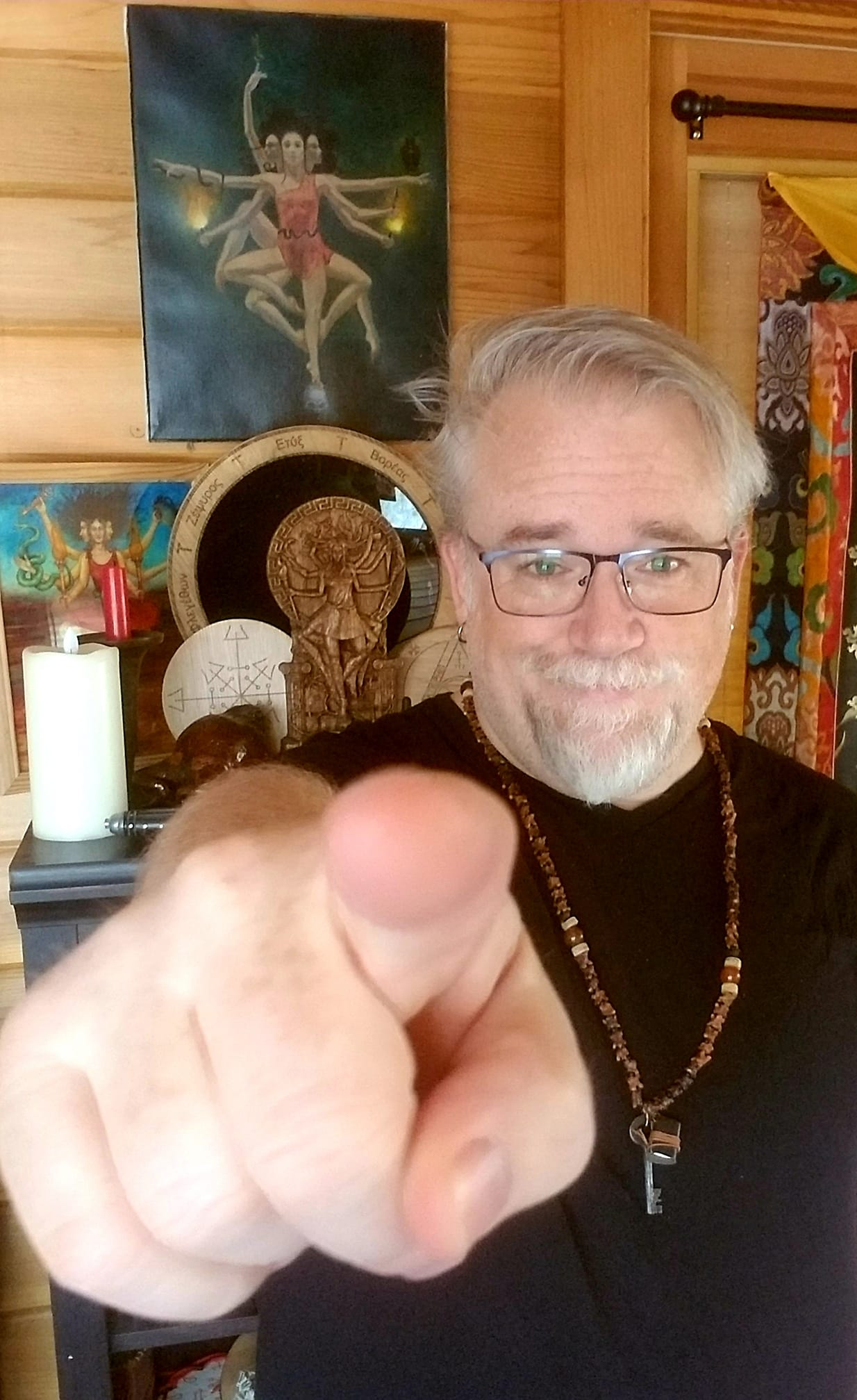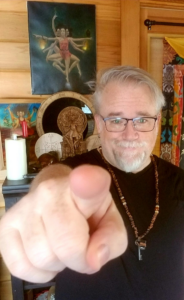Here’s an excerpt from Jason Miller’s latest Magick Monday Newsletter:
This morning a student asked: “could one receive a siddhi from accumulation of one of the gods mantras, for example Helios’s mantra or Jupiter’s chant?”
Given that they used the term “Mantra accumulation” I am assuming they have a background in Tibetan Buddhism, but like me, apply some of what they learn in that context to the wider world of magic.
We really can’t answer it properly without asking more questions though. Let’s cut to the heart of it: How does one receive Siddhi (enlightenment or magical power) from accumulating Mantras at all?
The answer is that a REAL mantra IS the deity and you are resonating with that power as you speak it.
So what then is a REAL MANTRA?
This is the tricky part. Some mantras are really just the name of the deity with prefix and a suffix stuck on. You don’t just see this in Tantra, but in early Zen texts like the Masters of Lanka.
And that’s fine if that’s the mantra that has been revealed by the Deity in a state of communion. Sometimes the Mantras are much more than that though, and speak secrets of their own. There is so much to be found in the twists and turns of mantras that it is a delightful exploration not just on the linguistic, but the physical and psychic levels.
Then there are tweaks and changes to mantra that are made over time by people that may or may not have actual experience in meditation. Two examples:
1. Tweaks by scholars or religiously motivated people that want to make it more specifically of the religion. Almost any time you see NAMO ETC ETC BUDDHA ETC ETC TADYATHA followed by OM you are looking at a root mantra that has a prefix added basically saying “Hey this mantra isn’t some stupid Pagan bullshit, its Buddhist, hail Buddhism, yay buddhism, and-a-one-and-a-two-and-a….
For instance, the root mantra of my weird summer obsession Chundi is NAMO SAPTANAM SAMYAKSAMBUDDHA KOTINAM. TADYATHA: OM! CALE, CULE, CUNDI SVAHA! I would basically chant the first part one time at the start of the mantra, then continue with OM! CALE, CULE, CUNDI SVAHA! for the rest but many continue with the whole thing over and over starting with NAMO.
Hear different versions and variations here: https://www.themathesontrust.org/…/zhunti-mantra-cundi…
2. Tweaks that happen naturally as the mantra moves from place to place. The most famous being VAJRA, which changes to BADRA in Western Tibet then BENZAR in some areas of central Tibet. So OM VAJRASATTVA HUM changes to OM BADRA SATTVA HUM changes to OM BENZAR SATO HUNG
Is the original better?
Depends on what we mean by better. More questions:
How does the power of the deity remain in a mantra after it has been given or discovered by the first human to use it? By the correct pronunciation that is closest to what the original Yogi used, or by the people that use it?
My first teacher used OM BANZAR SATO HUM but I knew that OM VAJRA SATTVA HUM is better Sanskrit: so what is true and authentic?
My answer lies in the four authenticities: https://www.strategicsorcery.net/the-four-authenticities/
Historically the Oldest pronunciation is the most authentic.
Culturally the pronunciation from my own teacher is the most authentic.
Functionally, whichever works best is the most authentic, and perhaps whichever is easiest for my mouth to make given my own language training.
From the perspective of Meaning perhaps an English translation would be best!
Which do you place value on? Which of these types of authenticities overlap or reinforce each other? Perhaps one is good for one thing and another for another.
For me: I’m a function guy, but I am also pretty sloppy with details sometimes. I happen to have a habit of using OM BENZAR SATO HUNG when doing that short mantra, but using OM VAJRASATTVA SAMAYA etc when doing the 100 syllable mantra.
Sometimes I get asked why I don’t have Global Rites and Mantras for all the Greek/Roman deities, or why I didn’t focus just on the planetary ones and instead included Goddesses like Juno.
The answer is that I haven’t been given a mantra of Luna or Venus yet. Could I just make one? Sure. Would the deity respond? Yeah, probably. I mean that’s the power of magic right? We name things and bind powers to those names. But its not quite the same as a mantra (or seal or sigil or image) that comes directly from the interaction between a Deity and a Human. This is why I don’t tend to favor sigils generated by the Rose or Kameas and don’t work with “angel names” generated by calculating birth times and such.
Sometimes someone will take the Hekate course and tell me “That was amazing! I am going to go off and make something like this for PatronDeityX!” Like they can just run off and throw it down on paper like they are rolling stats for a D&D character. It took 15 YEARS to work that material out and get the thumbs up from Hekate to teach it. Now, maybe some of those years are because I am kind of a dullard, but I do marvel at the way people think that Spirit can just be shat out of a brain fart or a midjouney prompt.
So, that then is a far too long answer to a simple question.
Subscribe to the newsletter, buy his books, sign up for his classes: https://www.strategic


